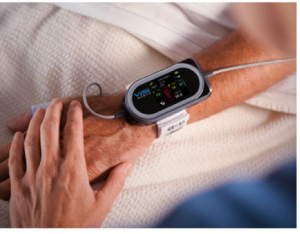Guest posting by Alisa Momin
The wearable technology market has been criticized repeatedly for failing to cater to patients who actually need to monitor their health on a regular basis in order to keep up good health and a decent quality of life. Instead, the industry is producing flashy technology for everyday people without chronic conditions or any real need use to track their sleep cycles or steps for about two minutes, before inevitably tossing them aside after the originality wears off. How many of us have tried tracking the amount of steps we take per day, or logging the amount of calories we digest and burn? How long did these practices last? Probably not long.
How do we fix this problem and make this kind of technology widespread and long lasting in the healthcare industry, where it has so much potential? By proving to people that wearables can actually help people detect chronic conditions, illnesses, or diseases before they have the chance to do much harm, we can overcome the lack of interest in wearables. We can also thereby move toward patients and consumers that actually have a need for this tech—especially aging patients with several chronic conditions. This is exactly what is happening now.
Recent news in healthcare is disproving the apparent uselessness of the current wearable technology market. The Scripps Translational Science Institute has received a grant from the USAID for its program that uses Sotera Wireless’ ViSi Mobile System to continuously monitor the blood pressure, pulse rate, ECG, breathing rate, temperature, etc. of Ebola patients through a wearable sensor. Ultimately, this would help in identifying warning signs of Ebola early on, before the virus has the opportunity to spread. Doctors’ chances to miss changes in health status will be significantly reduced, as they would receive the data collected regularly. This project, called STAMP2, could monitor up to 500 patients, with the potential to grow even further.
Why is this important? I believe this could be a new approach for this industry that opens up the usability of wearables on a global scale. If physicians become more aware of the widespread use of wearables, especially in preventing health concerns even as devastating as an Ebola outbreak, they will become more invested in applying this technology to their own aging patients in order to prevent or detect chronic conditions earlier. Patients tend to trust their doctors—44.2% have said their doctors’ recommendations would be an incentive to use a fitness tracking device. Hopefully, as wearables start to show that they are useful in healthcare, they will have the opportunity to impact more patients in the future.
http://www.wired.com/2014/11/where-fitness-trackers-fail/
http://technologyadvice.com/medical/blog/study-wearable-technology-preventative-healthcare/

